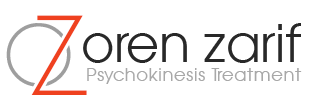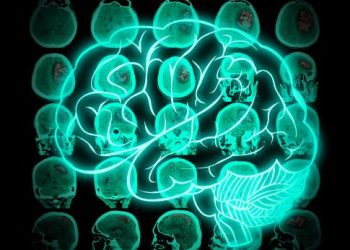You will likely start your recovery in a hospital or rehabilitation facility. Depending on the severity of your stroke, you may be treated with clot-busting drugs and blood thinners.
Consistent participation in rehab is essential to speed up recovery. You can do this with apps that turn rehabilitation exercises into engaging experiences.
Physical Therapy
When a blood vessel that carries oxygen-rich blood to the brain gets blocked or bursts, part of the brain cannot get the nutrients it needs. That can cause a stroke, which often causes weakness or paralysis on one side of the body, trouble thinking and understanding, and problems with balance and coordination.
If you have a stroke, you should go to the hospital right away to get treatment that may help you recover faster. Doctors will check your health, and then do tests to find out what caused your stroke. They will ask questions about your symptoms and how long they’ve been happening. They will also do a physical exam and order imaging tests like an X-ray or CT scan to see what part of your brain is affected by the stroke.
Your doctor will likely prescribe medicine to treat your symptoms and lower the risk of another stroke. They may also suggest lifestyle changes, such as diet and exercise, and may recommend surgery to prevent future strokes. They may also refer you to specialists for rehabilitation, such as physical, occupational and speech therapy.
Rehabilitation after a stroke can be intense and often involves many different kinds of therapy, which is done by healthcare professionals including physiotherapists, occupational therapists, speech and language therapists, nurses and specialist doctors. They will work with you to set goals and plan your recovery.
They will assess your physical ability and may teach you to use walking aids if you have trouble with movement. They will do exercises that aim to improve your muscle strength and coordination. They will also try to improve your memory and the way you think, as well as teach you to eat and wash yourself, do your housework, bathe and dress.
Depending on the severity of your stroke, you might start rehabilitation while you are still in hospital. They might take you to a specialist stroke unit, or you might stay in a hospital ward. You can also receive rehabilitation at home or in a community rehabilitation centre (see the options under Getting good care, on EnableMe).
It’s common to feel angry, frustrated and bewildered after a stroke. You might need a psychological assessment and advice to cope with these feelings. Joining a patient support group is also helpful.
Occupational Therapy
Occupational therapy (OT) helps you find ways to do everyday activities that have been affected by your stroke, such as eating and dressing. OT uses different techniques to help you learn how to use your arms, hands and fingers again, and to improve your balance and coordination. They may also teach you strategies to compensate for any loss of cognitive function.
Every person’s recovery is different, but most people’s problems with movement and thinking improve quickly in the first weeks and months after a stroke. Many will continue to make improvements for months or even years.
Some people who have a stroke experience a short episode of symptoms that lasts only minutes or hours, which is called a transient ischemic attack (TIA). It’s important to seek medical help immediately if you or someone you know has this type of stroke. If left untreated, it can lead to a major stroke within days.
The most common symptoms of a stroke are weakness or paralysis on one side of the body, difficulty with speech, and problems with balance and vision. Other problems include trouble with thinking, awareness, attention and learning, and memory. The rate of recovery after a stroke depends on many factors, including how severe the stroke was, how soon it is treated, your age and overall health, and how soon you get to hospital.
Once you have been discharged from hospital, your therapist will help you plan and manage your recovery at home. This might involve arranging equipment such as walking aids or wheelchairs and finding out what services are available in your local area to help you get around. They will also give you advice on how to manage your health problems such as diabetes and high blood pressure, and help you learn to do everyday tasks.
The physiotherapist will also help you with exercises to improve your mobility and strength. The therapist will also assess your continence, as well as whether you have any communication or cognitive problems. They will set goals for you that are broken down into small, manageable steps. They will work with other members of your team, such as:
Speech Therapy
Speech therapy helps people with a variety of speech issues and disorders. These range from minor problems like a hoarse voice to partial loss of speech due to stroke. Treatment involves working on pronunciation, strengthening the muscles used in speech and learning to speak correctly.
A speech-language pathologist is the professional who treats your speech disorder. They check how well you speak and understand and then develop a treatment plan for you that is specific to your needs. They may use a number of different techniques and therapies, including articulation therapy, language intervention therapy, VitalStim, Lee Silverman speech therapy (LSVT), and tongue-tie therapy.
You can get speech therapy for a number of conditions, including aphasia, stuttering, dysarthria and lisps. The most common condition that speech therapy can treat is aphasia, which is a problem with understanding and producing language due to brain damage. It can also affect writing and reading skills, as well as how you eat and swallow.
Another issue that can be helped with speech therapy is dysarthria, which is a problem with the muscles in your mouth and throat. This can lead to slurred speech, difficulty chewing and swallowing, or trouble moving your lips. It is sometimes caused by a stroke, but can be found in other conditions, such as multiple sclerosis and amyotrophic lateral sclerosis.
Swallowing disorders (dysphagia) are another issue that can be treated with speech therapy. These are problems with swallowing that can occur after a stroke, or due to other conditions, such as Parkinson’s disease and oral cancer. Speech therapists can help you learn ways to improve your swallowing ability, as well as give you exercises for the muscles in your mouth and throat.
You can also receive speech therapy for other conditions, such as cleft lip and palate, apraxia, or to help with the development of social skills in children who have autism. These treatments can be provided by a speech-language pathologist or by a psychologist who has qualifications in cognitive behaviour therapy. If you are prescribed speech therapy, it is usually covered by statutory health insurance, apart from a fixed amount that you have to pay yourself, known as the copayment.
Psychotherapy
A stroke can cause emotional problems in addition to affecting physical function. For example, depression and anxiety are common after a stroke. Psychotherapy can help people manage these emotions and improve their ability to cope with challenges.
Psychotherapy involves regular interactions with a mental health professional, or therapist. Therapists are trained to listen and offer support. They also provide techniques to help you change unhealthy behaviors and deal with problems such as relationship difficulties. Psychotherapy can be used alone or in combination with psychiatric medications. There are many different types of therapy, and the one that’s right for you depends on your goals and needs.
A person who has had a stroke may have trouble talking or finding words, or they may be unable to speak at all. Speech and language therapists can help people learn how to communicate again, including using gestures and written communication.
They can give tips to make eating and drinking easier, such as taking smaller bites of food or sitting up straighter. They can also help people retrain their muscles to control their movements, which can improve swallowing. Some people may need a feeding tube, which can be put into the nose (nasogastric tube) or directly connected to their stomach in a small operation (percutaneous endoscopic gastrostomy, or PEG).
Stroke survivors often face challenges with activities of daily living, such as bathing, dressing and preparing meals. Rehabilitation psychologists can assess a person’s mood, emotional and family dynamics and other factors to help them adjust to life after a stroke.
A person can receive psychological treatment by seeing a doctor who specializes in mental illness or a therapist with training and education in psychology, such as a psychiatrist, psychologist or social worker. Some therapists use specific approaches that have been shown to be effective by research. Other therapists have a more general approach that can include elements from other disciplines, such as medicine or yoga. It’s not uncommon to try several therapists before finding the right fit. If you’re looking for a therapist, consider asking for recommendations from friends and family members, checking the provider network of your insurance company or finding one online.









